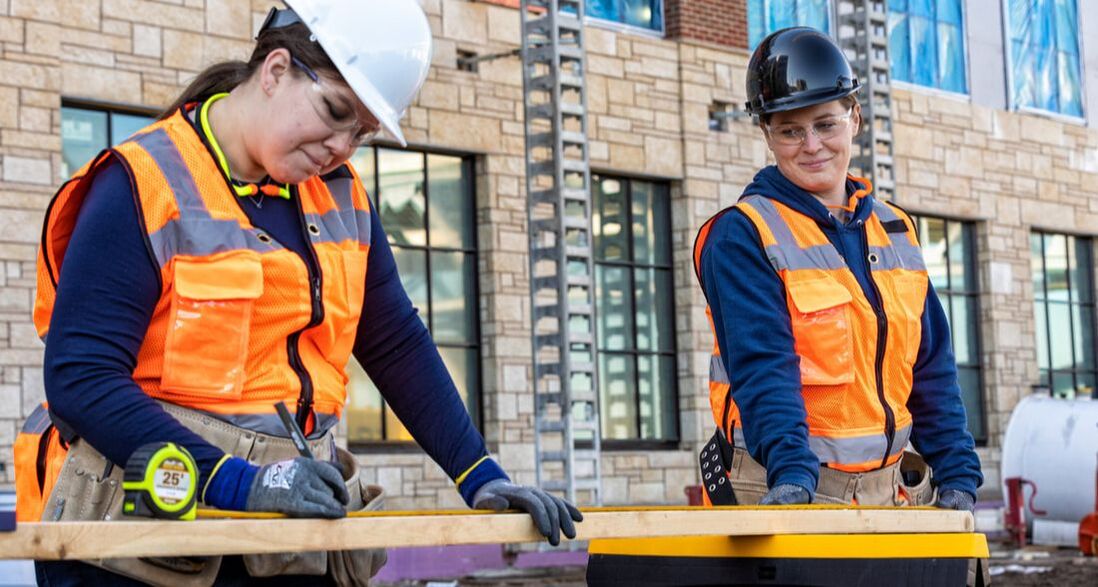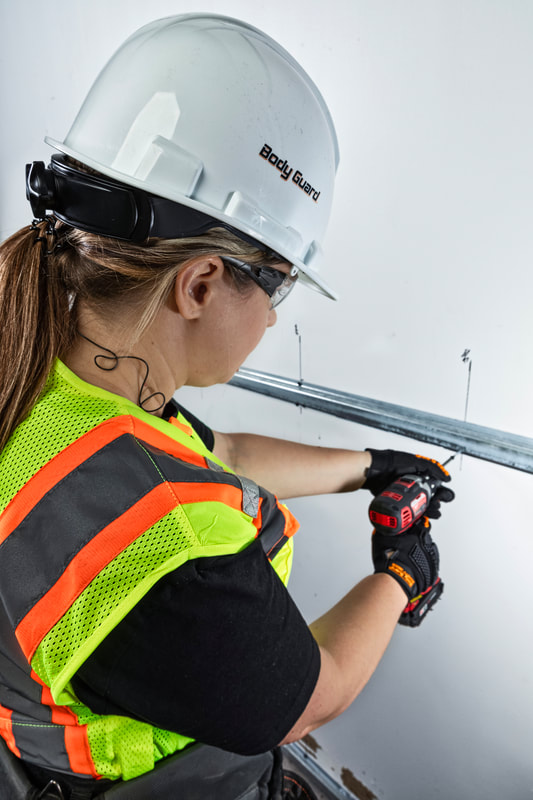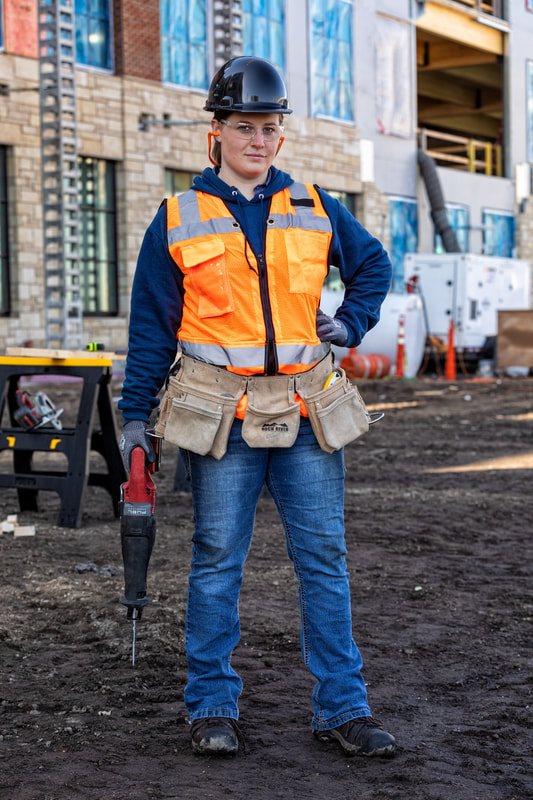The PPE Problem: Why like-for-like items are the future of safety
November 27, 2023
By the Blue Print Editorial Team
By the Blue Print Editorial Team
|
Decision time. A third of your workforce cannot use proper PPE. Do you hope for the best? Or do you get ahead of the problem? For almost a third of all manufacturing employees in America, this isn’t a hypothetical: It’s reality.
How is that possible? Well, approximately 30% of workers in the U.S. manufacturing sector are female (1). Meanwhile, PPE has historically been designed for men. And there’s the disconnect. “When we’re handed men’s PPE or unisex PPE, we become a walking hazard on a job site,” said Amy Roosa, an EH&S specialist with two decades in the field. The current environmentDuring a career that’s spanned roles at Sam’s Club, Airgas, and Gallagher, Roosa has coached teams on the danger of assuming females will be fine just using unisex items such as vests.
“From my own personal experience, wearing oversized garments, I catch on stuff, I get pulled back – I've had bruises down my body from jerking back and hitting equipment,” said Roosa. “It's not safe. And if I don't feel safe on the job site, how can I effectively do my job?” Roosa believes there’s an influx of women coming into the trades, and that now is a great time to push back on the notion that wearing ill-fitting PPE is the best teams can do. Instead, she encourages teams to request like-for-like items. If a vest was designed for a small man, it won’t fit a woman as well as one that was designed for the female body. She notes that some companies are now aggressively hitting the market with women's brands because they see the need – and the opportunity. “So, now you're going to feel it,” Roosa said. “And I think that’s immensely important because it sends a signal to women that they’re wanted, they’re valued in the workplace when they can find the PPE that they need.” What are the differences?Regardless of gender, PPE should be personal. It should fit and protect the person wearing it. Vests shouldn’t be baggy. Hard hats shouldn’t be loose. And gloves shouldn’t have open space in the fingertips.
GlovesFemale hands are vastly different from males. First, lengths and widths are shorter. Then, for the
circumference, it can be a difference of an inch and a half from a male hand to a female. “So, if I don't have a glove that goes to the tip properly, or is thin enough for me to be able to grip and use as a tool, then I'm just going to take it off,” Roosa said. “Now, I'm using my bare hands, and I'm going to be at risk for an injury.” GlassesSubconsciously, we’re all aware of this fact, but facial structure is completely different between men and women.
“Let’s say I have a pair of men’s safety glasses on,” said Roosa. “Here’s the thing that you have to think about: If there are gaps visible, and I’m soldering or I’m in a heavy debris area, that debris is going to get in between and get into my eye ducts. If I’m in a chemical area, it’s going to get into my eyes. So again, women need something that is a little more narrow, a little more fitting.” Vests“I think this is a huge one,” said Roosa. “On social media, I see posts where when women are on the job, and they're talking about how much they love their job, and the safety vest they’re wearing is just hanging on them. And I just want to reach out and be like, “There’re women’s vests out there!”
Roosa says the areas to pay attention to – the areas where differences in vest size can prevent injuries – are shoulders first and then the hips and chest. “So, there is definitely a difference in shoulders. Men usually have about a five-inch broader shoulder than we do. And then in the hips, and we have narrower hips, but we need a little bit more room in the chest. So, a lot of give has to happen.” She points out that many vests are adjustable to accommodate for different bodies. “The average size in the U.S. is a size 16, but once you get down to the hips, that can change. So having a vest that fits us allows us to be safer, it allows us to have more confidence on the job site, it allows us to focus on our job as well. And I think that’s important. Of the things that I see on a job site, the safety vest is the number one giveaway and the easiest fix to have.” Women are a tenth of the construction workforce in America (2). That means it’s very likely that 1 in 10 employees have an ill-fitting vest. Three best practices regardless of gender
The takeawayIn general, employers want to prevent injuries wherever they can. Having the correct PPE for the whole team is a good step in that direction.
“Your return on investment, your ROI, is retention of female workers in the workforce,” said Roosa. “If they feel valued because their employer is giving them the proper PPE they need, that’s just addressing one hurdle of women on the job site, but they’re gonna feel valued, they’re gonna be able to do their job safely, and you might actually be able to retain them for long periods of time and gain the reputation of being a female-friendly employer.” Want help?Sources:
Vertical Divider
|
Like what you're seeing here? Subscribe to the Blue Print for FREE and get the magazine sent right to your address.
The Safety RackAfter decades of working in the EHS field, Amy Roosa decided to advocate for proper women’s PPE. One way she does that is through The Safety Rack, where she reviews gear and discusses the specifics of PPE that’s designed for women.
“It’s about letting people know what's out there, where to find brands and everything,” said Roosa. “I do it because there's a need, and it gets the conversation started. I know the numbers. I know the data and being able to provide that I think is helpful.” |





